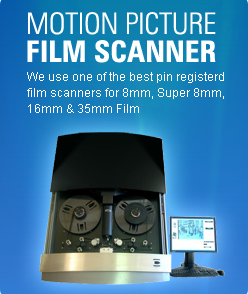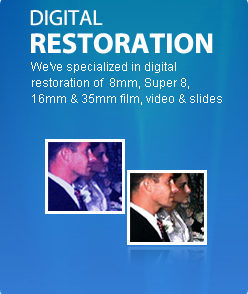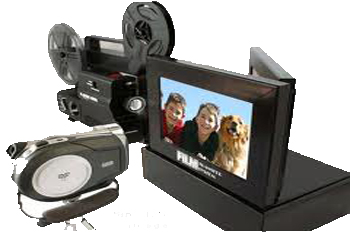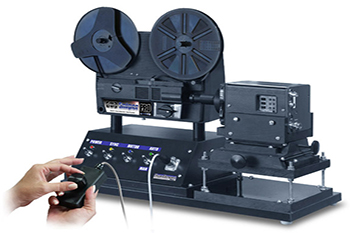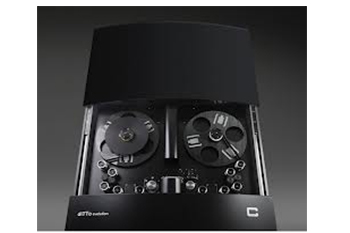
Film Conversion Equipment
Film Scanning and Film Transfer Equipment Types
The type of film scanning machine used for your 8mm, Super 8 or 16mm film conversion will have as much of an impact on the quality you receive as the resolution of the scan itself will. For example, if you wanted to digitize a photograph and tried doing it two different ways. You first put the photograph down on a table and took a picture of it using your smart phone or camera. Then you took the picture and scanned it using a flatbed scanner. If you compare the two side by side on your computer it will become really obvious that the flatbed scanner produced a digital image as good as the photograph. However, the picture you took with your phone or camera does not look close to the quality of the original photograph.
The same goes for scanning your 8mm, Super 8 or 16mm film. The real-time and frame by frame machines below are using a camcorder to take a picture of your film. The motion picture film scanner and Datacine machine are scanning the film. The results will be significantly different.
Film Conversion Equipment |
|
Real Time
|
|
Frame by Frame
|
|
Professional Film Scanners
|
|
So, at this point youíve learned that film transfers can capture at standard definition (480 lines), high definition (1080 lines) or 2K (1556 lines). Youíve also learned about the 3 different types of film transfers being used today. In order from least to best quality we have:
Appleton Fun Facts: Appleton’s population is approximately 70,087. Appleton, Wisconsin, in Outagamie county, is 88 miles N of Milwaukee, Wisconsin. The city benefits from easy access to the nearby cities and towns that it shares the Appleton-Oshkosh-Neenah metropolitan area with. Appleton’s population is approximately 70,087.
Wisconsin Fun Facts: Today, Wisconsin leads the nation in dairy production and is known for the quality of its cheddar cheese‚Äďresidents even sometimesrefer to themselves as ‚Äúcheeseheads.‚ÄĚ Famous Wisconsinites include architect Frank Lloyd Wright, magician Harry Houdini andU.S. Army General Douglas MacArthur. Wisconsin became aU.S. territoryfollowing the American Revolution and soon after began attracting settlers looking for work inits mining, lumber and dairy industries.
